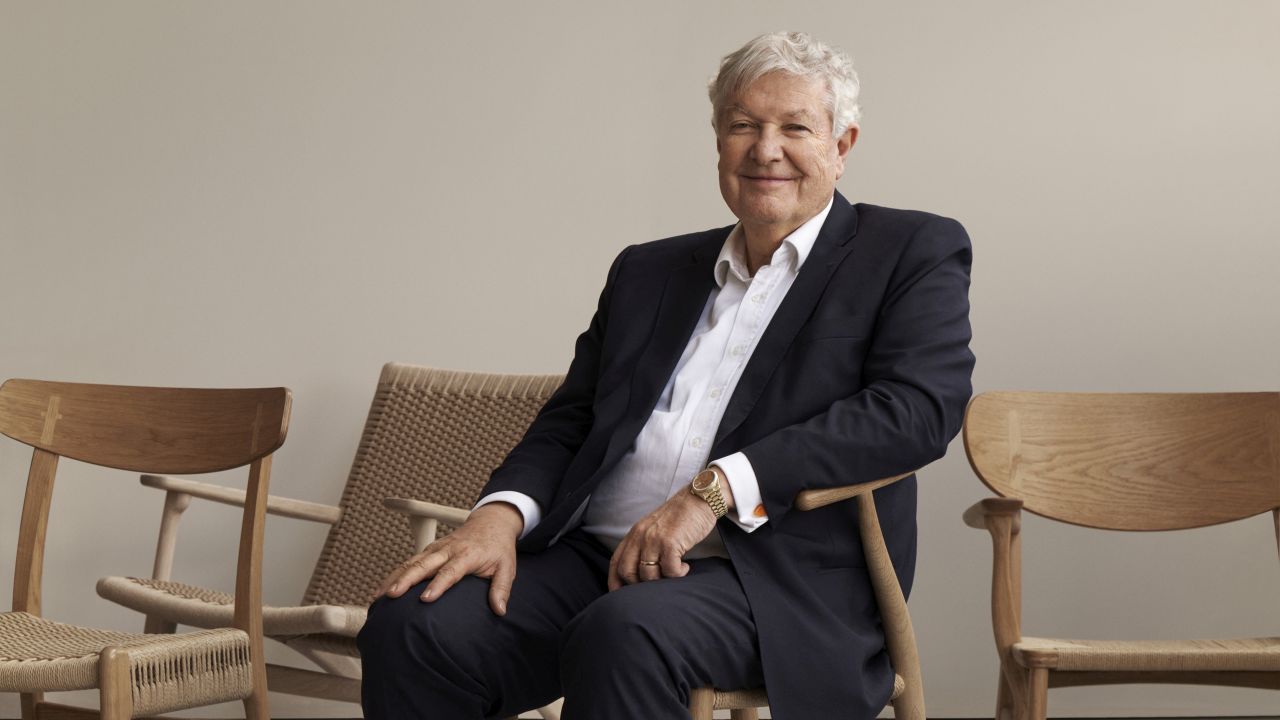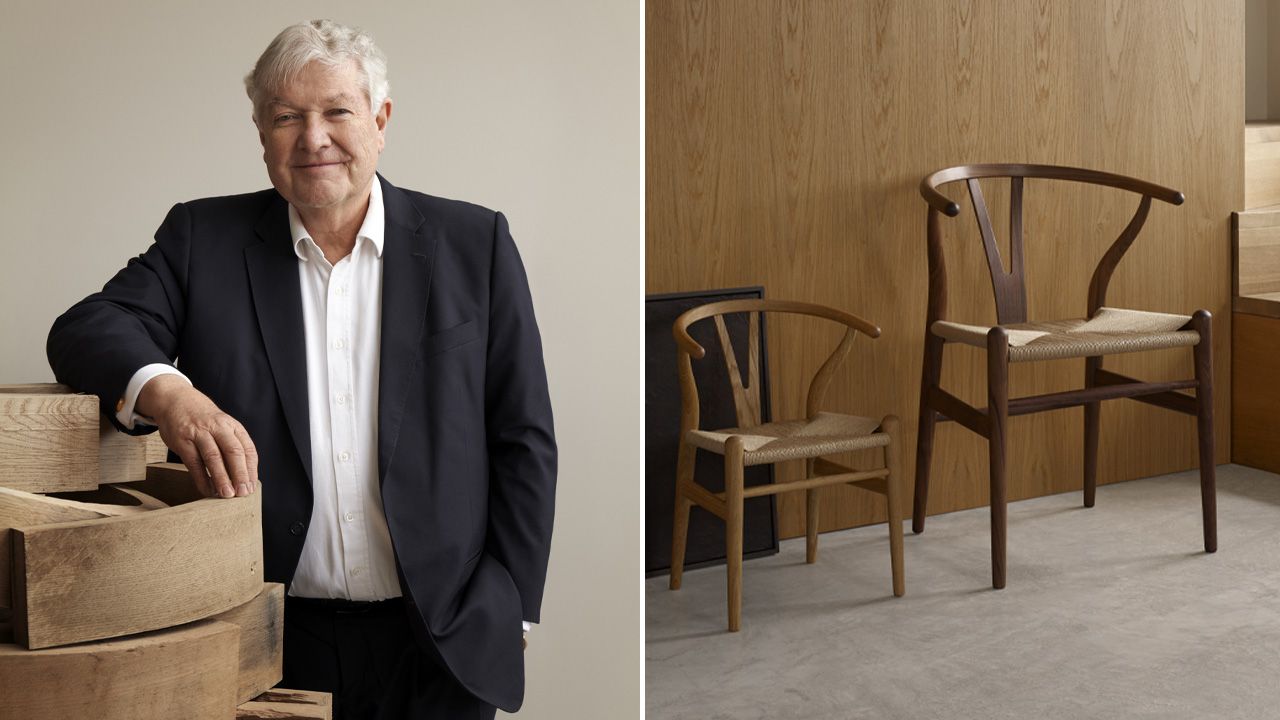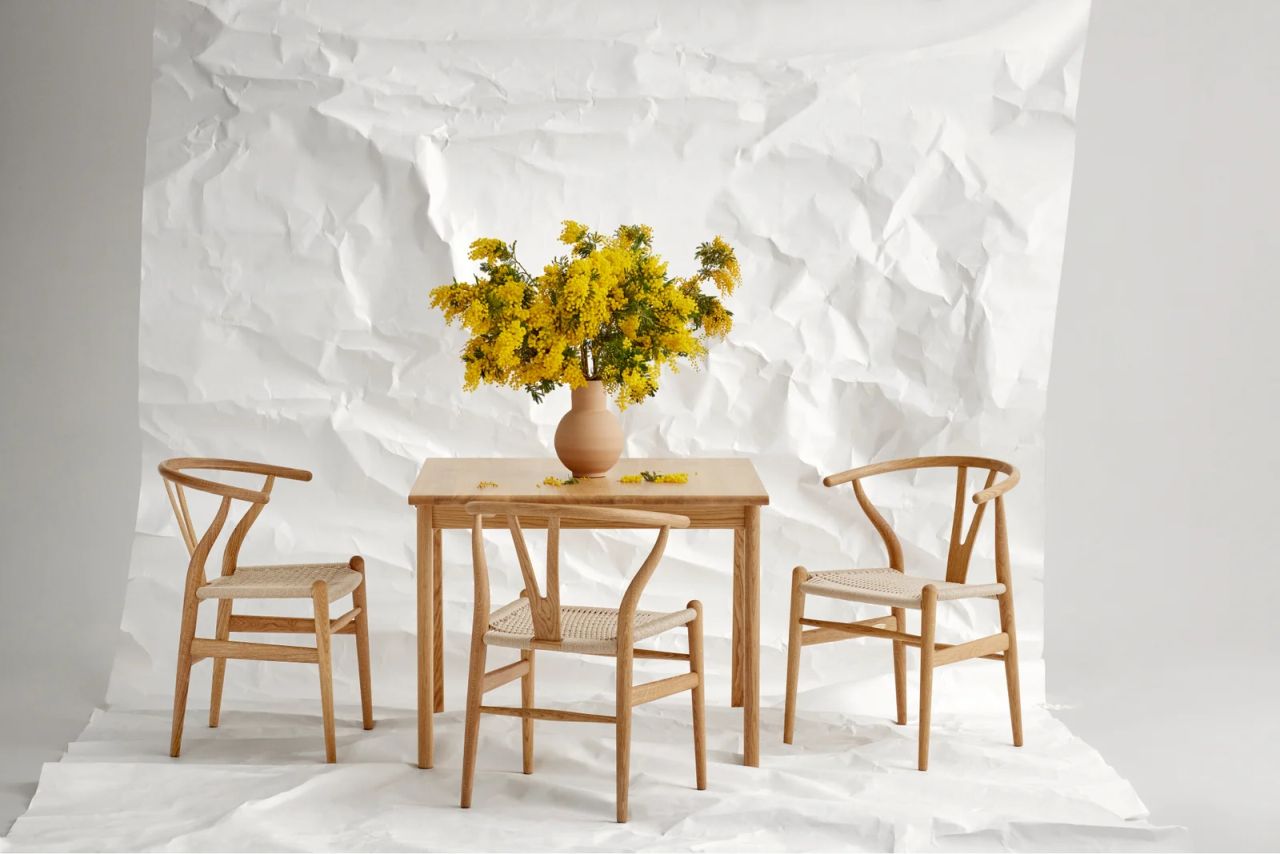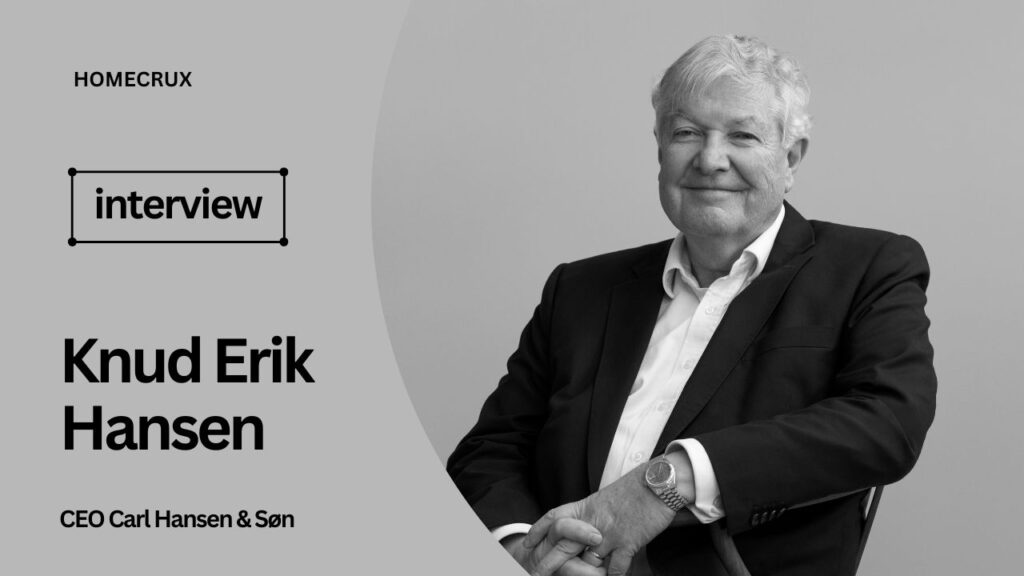“Only the human hand and eye can infuse a soul into a piece of furniture,” says Knud Erik Hansen, CEO of Carl Hansen & Søn. In the fast-paced world of trends and automation, the family-owned Danish brand and its members have an unwavering faith in human craftsmanship and skill, creating durable furniture designs. The third-generation owner of Carl Hansen & Søn, Knud Erik Hansen, spent his childhood immersed in the company workshop, watching with a careful eye and learning.
Built on firm pillars of sustainability, community engagement, and a celebration of human craftsmanship, the iconic Danish furniture brand is celebrating its 117th anniversary with leading masterpieces created by pioneers of Danish design, including Hans J. Wegner, Arne Jacobsen, Kaare Klint, and Børge Mogensen. Homecrux reached out to Hansen to learn more about the enduring legacy of the family company.
Homecrux (HC): Carl Hansen & Søn is a family legacy with a rich portfolio of iconic designs. Did you always envision yourself joining the family business?
Knud Erik Hansen (KEH): I grew up in our workshop side by side with the cabinetmakers. So from an early age on I was familiarized with the special atmosphere in the workplace and the distinct scent of solid wood. Which I really got to love! Everyone should experience this sensation, as I believe this would remind people to appreciate nature and look better after our planet in general.
But that’s another story… And to answer your question. No, I didn’t always envision joining the company… the first about 30 years of my career I spent in shipping in Africa and the Far East. When my older brother, who ran the company from the 80s until 2002, decided to go on pension, we had two choices – either sell the company or I had to take on the reins. And here we are.

HC: Can you describe what your role entails and how the company is structured?
KEH: We are still a family company, and both my sons have joined – so today, both the 3rd and 4th generation is active in the business. I’m the CEO, my wife oversees our flagships and accessories collection, our youngest son holds the position as CMO and his older brother runs our facility in Vietnam. Our production is located on the beautiful island of Funen, Denmark, where our entire collection is manufactured by a team of approximately 550 employees. In addition to that, a team of about 350 employees work in our facility in Vietnam, where our outdoor collection is produced.
HC: What changes have you witnessed since taking on the company, both within it and in the global design landscape?
KEH: Well, when I took over the company in 2002, we were a small team of just about 30 employees. Since then the company has grown significantly, both in terms of employees, collections and distribution channels. 20 years ago we had no flagships and today we operate 24 own stores and showrooms across the globe. In terms of the global design landscape, I feel that topics like sustainability, longevity and flexible solutions are on the rise. More than ever.
HC: In your view, how has Danish design influenced the world? How does your company contribute to it?
KEH: Danish design brought minimalism to the world, when Kaare Klint in 1914 presented his Faaborg Chair, which was stripped of all decorative details that didn’t serve a functional purpose. Klint was the founder of the Danish Modern movement, which included names like Arne Jacobsen and Børge Mogensen and has been a source of inspiration to designers around the globe. To this day, we embrace Klint’s principles promoting functional, minimal design whenever launching a new product.
Also Read: 30 Most Famous Chair Designs of All Time
HC: How would you describe your furniture in the simplest way? What sets it apart from other global brands?
KEH: Our products are crafted by highly skilled artisans (in Denmark) from lasting, natural materials in a minimal, functional design that will stand the test of time.
HC: Where does the inspiration for new projects come from?
KEH: Our inspiration is mainly fueled by three sources: Contemporary designers, our vast archive of iconic mid-century designs, or from inspirational journeys around the globe.
HC: How do you keep up with the demands of a fast-paced modern world while sticking to your commitment to sustainability and traditional craftsmanship?
KEH: Sustainability, craftsmanship, and innovative design have always been at the core of our DNA, so keeping up with or being ahead of the world we live in is part of our history.

HC: Could you walk us through Carl Hansen & Søn’s waste management strategy?
KEH: Since our foundation in 1908, we have always made an effort to minimize waste, and today, we basically create no waste in our production, as we use every single piece of raw material, including wood, leather, and fabrics. Materials that are too small for furniture production are either used to create smaller objects, like cutting boards, plates, or seasonal ornaments. And pieces too small for that are donated to a nearby kindergarten for creativity.
Wood shavings and sawdust are delivered to the local district heating plant, delivering heat for our factory and about 400 homes in the village, where our facility is located. In 2024, the leftovers delivered by us to the district heating plant accounted for 34% of the total energy generated for heating the local community, including our own factory.
HC: Aside from preserving the ethos of the legacy of the company, your particular focus has been on global expansion. How is that going?
KEH: The EU, the US, and APAC are doing well. And so are our 23 flagships in major cities from NYC, over London and Paris to Tokyo.
HC: Is it difficult to strike a balance between classic designs and selecting new designers to work with? Is there a set skillset you look for?
KEH: It is not an easy task, but I believe that our collection proves that we are on the right track. One aim is that all pieces through the collection suit each other and can create a coherent, soothing atmosphere. In addition to that, the best compliment we can get is when people can’t tell if a product is new or a classic from the archives. To us, this is the utmost approval by our clients.
HC: Can you tell us what THE LAB apprentice workshop is and why it was created? What has it achieved so far?
KEH: THE LAB is an apprentice workshop located in Carl Hansen & Søn’s factory, which aims to train future cabinetmakers.
Quality craftsmanship is the foundation of Carl Hansen & Søn, which is one of the reasons why we established THE LAB apprentice workshop. Having an apprentice workshop is in our own interest, because we need skilled cabinetmakers. We are one of the very few furniture manufacturers still producing in Denmark, thereby creating jobs and growth, and the global demand for our furniture is high.
It is, therefore, extremely important that our production can keep up by having skilled employees who can deliver the quality and finish that Carl Hansen & Søn produces. But they are hard to find. Training new cabinetmakers is, therefore, crucial to fulfilling our future growth aims.
Secondly, the craftsmanship is the beating heart of the company. By training our own cabinetmakers, we are helping preserve and carry on the craftsmanship and design tradition that Denmark has become so well known for.
Machines take care of the heavy work in our production, so the cabinetmakers can focus on the details and ensure the wood has soul. The human element of a piece of furniture is very important, in my opinion. Where you can see that it was created by a human being. This is the essence of what we want to train our apprentices in.
The programme is structured as a modern apprenticeship. The training takes three years and nine months, and combines periods at THE LAB apprentice workshop, periods in production, and periods at the technical college.

In THE LAB apprentice workshop, our apprentices are trained to work on projects that they have to manage from start to finish. They learn to make different kinds of joints, such as finger and dovetail joints, sanding methods, cutouts, weaving, and many more machine and hand skills.
Thereby, they gain an in-depth understanding of the possibilities and challenges of the cabinetmaking trade. The apprentices also learn how to make fixtures for internal use, and how to restore vintage furniture and create commissioned pieces. The combination of these tasks helps train some very versatile cabinetmakers.
After completing their training, our apprentices do a journeyman’s exam, and it is very satisfying to see them master their craft to perfection. After that, we naturally hope that our newly fledged cabinetmakers will continue to work with us and help add soul to our large collection of iconic design furniture.
HC: Craftsmanship is the soul of everything Carl Hansen & Søn does. Why is it so essential in today’s world of automation and fast design?
KEH: Only the human hand and eye can infuse a soul into a piece of furniture. This is one of the crucial ingredients that sets our products apart from other global brands.
HC: Do you have a personal favorite in your company’s portfolio?
KEH: Unfortunately, I can’t. I love all my children equally and unconditionally.
HC: Among the pioneers of design (Danish or otherwise), who has inspired you the most? Did you ever get an opportunity to witness Hans J. Wegner at work?
KEH: Same answer as before. I appreciate the work of all our designers equally. However, when I ask the marked, the answer is very clear: Hans J. Wegner is the creator of our bestselling products. I had the chance to meet him on several occasions… both professionally and privately.

HC: What’s next for Carl Hansen & Søn? Any upcoming projects or directions that particularly excite you?
KEH: Well, we never have a dull moment, and there is always something exciting going on… which I unfortunately can’t share with you at this point. So stay tuned!
Follow Homecrux on Google News!




